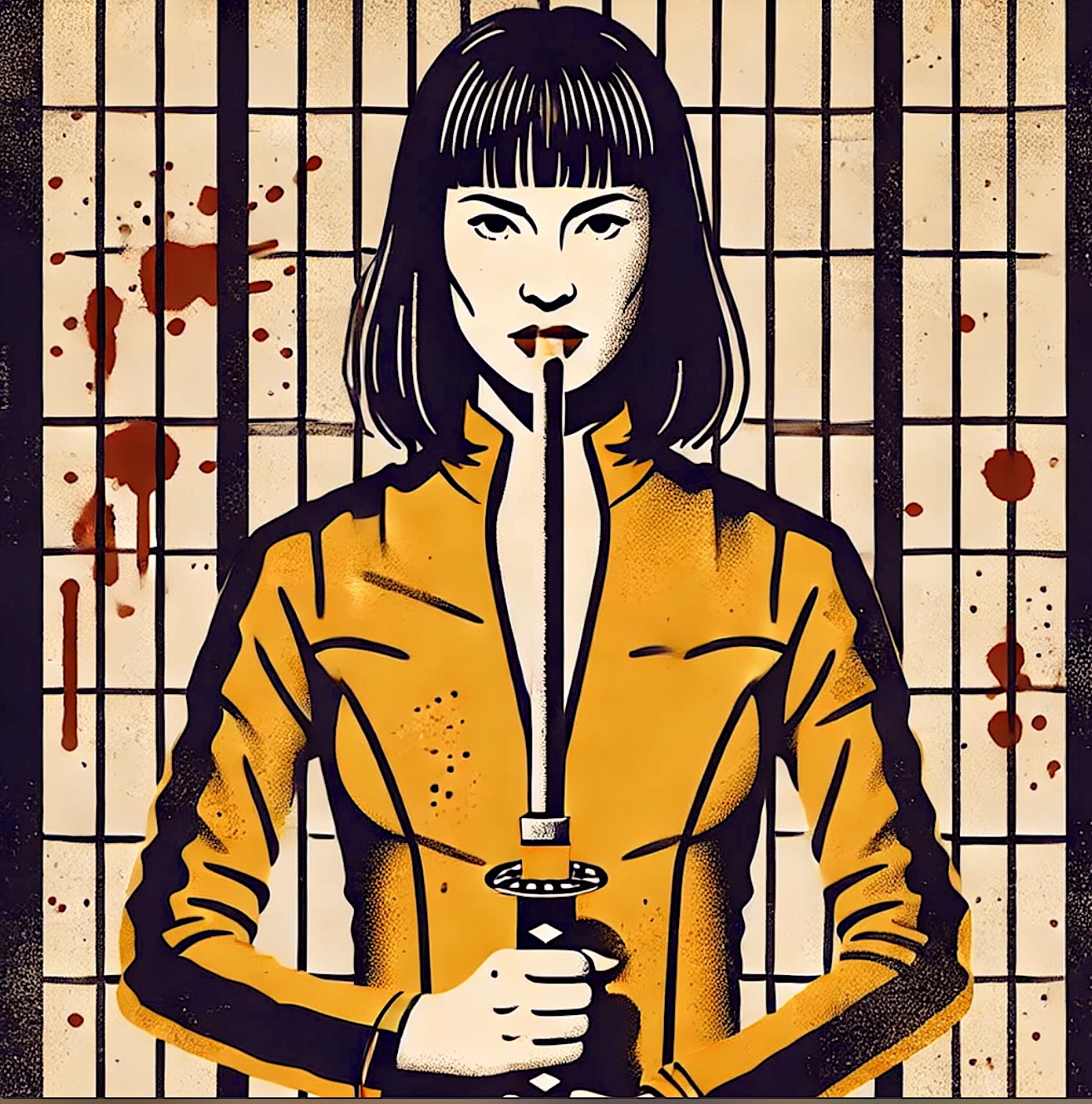Slicing Through Style: Kill Bill’s Samurai Soul and Japanese Philosophy
The Bride wakes from a four-year coma ambushing the volumes of her own narrative with one crystal-clear mission—revenge served cold and sharpened like Hattori Hanzo’s finest steel. Quentin Tarantino’s Kill Bill Volumes 1 and 2 aren’t merely ultraviolent pop-culture collages; they’re a samurai saga drenched in anime style, yakuza grit, and Zen paradox. But beneath every bullet casing and katana slash lie hidden Easter eggs—subtle nods that cinephiles will spot if they’re paying attention.
From the opening House of Blue Leaves massacre to the climactic Bill showdown, The Bride channels mushin (no-mind, pure action unclouded by ego). Each slice is executed with the precision of a monk’s mantra, free of second-guessing. If you glance at the far wall of the palace, you might catch a tiny framed kanji that reads “ichi” (one)—a silent hint to the five-point technique she masters later.
Yet before her blade sings, she must embody gaman (stoic endurance in the face of suffering). Strapped to a wheelchair and dumped alone on the side of the road, her crawl across that hospital floor is agony incarnate—face inches from the tiles—but her eyes never waver from the horizon. Notice the porcelain doll tucked in her wheelchair’s pocket: Tarantino’s cheeky nod to the child spirit motifs of Kwaidan.
Tarantino layers in wabi-sabi (beauty in imperfection) through each set’s scars—the splintered wood of Pai Mei’s dojo, the blood-slicked lobby tiles of the Blue Leaves, even The Bride’s scuffed yellow tracksuit. Look closely and you’ll spot deliberate cracks in the floor painted gold, a mirror to kintsugi’s golden seams.
Then there’s kaizen (continuous improvement). The Bride’s first duel with Vernita Green is raw and inexperienced—sloppy footwork and frantic swings. By the time she enters Budd’s trailer, every movement is economical, every parry a lesson learned. In the distance, you can see a row of mismatched boots lined up outside Budd’s RV—an Easter egg sequence that mirrors Luke’s X-wing lineup on Yavin 4.
Subtle threads of yūgen (subtle mystery and beauty) drift through Hattori Hanzo’s workshop. A single, unstrummed shamisen leans against the wall as Master Hanzo mutters “Go ahead.” That lonely instrument isn’t just ambianceit’s a bridge to the silent reverence in Ugetsu Monogatari. And when O-Ren Ishii’s Crazy 88 charge the Bride, her calm bow before the massacre is a living tableau of tatemae (public façade) masking honne (true feelings).
Look for one final Easter egg: on The Bride’s parachute suitcase is a tiny silhouette of a samurai helmet,the same logo from Kurosawa’s Seven Samurai, a wink that this is, in spirit, her epic.
Author’s Note
You’ve just survived a dive into Tarantino’s blood-drenched homage. If you caught the “ichi” kanji on the palace wall, that’s your cue to recall the Five-Point Palm Exploding Heart Technique. The porcelain doll in her wheelchair? A salute to Kwaidan’s ghostly children. Those golden floor cracks nod to kintsugi’s mended pottery. And that samurai helmet on her kit bag? A final tip of the hat to Kurosawa’s Seven Samurai. Keep your eyes peeled, Tarantino’s pantry of pop-culture treats still has a handful of secret sweets left.
Thanks for slicing through this philosophical blade dance. If you catch The Bride perched on Pai Mei’s wooden dummy, that’s a riff on samurai kareshi (technique embodied). Notice the anime insert’s grainy cel-shading next viewing, it’s a love letter to Studio Pierrot’s 1960s shorts. I left out how the soundtrack’s taiko drums hint at kacho-fugetsu (nature’s reflection) and how Bill’s calm mask echoes shikata ga nai (acceptance of fate). May your next re-watch uncover more hidden samurai secrets.


Leave a Reply